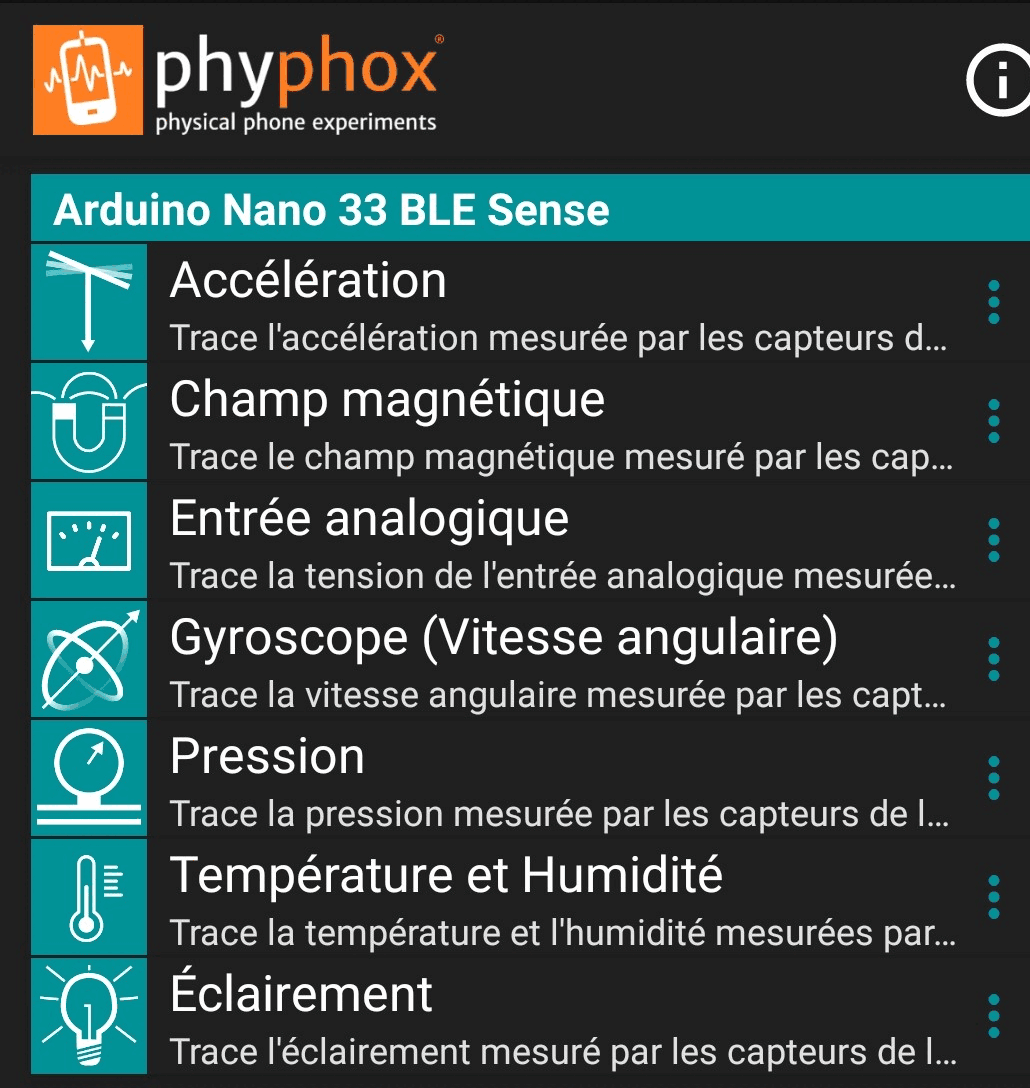Remote sensors with a smartphone
An Arduino board to boost your smartphone
Add sensors to your smartphone to measure acceleration, angular velocity, temperature, light intensity, magnetic field, or voltage? It’s possible for less than 40 euros!
The Arduino Nano 33 BLE Sense board has all these sensors, and can easily send its measurements to your smartphone via Bluetooth, communicating with the phyphox application. We have simplified the process as much as possible: you upload our programme to your Nano board, you add the phyphox experiments to your smartphone with our QR code, and that’s it: you can start your measurements…
Measurements can then be taken without endangering the smartphone (a free fall, for example), but also compensate for the lack of sensors on some smartphones. This small board of just a few centimetres becomes a particularly useful tool for physics teachers wishing to use smartphones for practical work, but also for all curious people interested in a physical measurement tool in their pocket.
The Arduino Nano 33 BLE Sense board can be easily found at a very affordable price; we freely distribute all the programs to access the sensors, as well as a list of equipment. We also distribute the 3D printer plan of a compact and solid box that protects the board during use. We also have a program compatible with the Arduino Nano 33 BLE Sense REV2 board, which is very similar.
Quick Start
Here is a detailed How-To to guide the configuration of both smartphone and nano board:
1 / 10
Tutorials and programs
To go further, here are the source documents and a short pdf tutorial. If you are used to coding, the programs can easily be adapted to your needs.
New Version!
A new version of the phyphox experiments has been proposed by Sebastian J. Spicker, from the astro-lab team of Cologne University, and implemented together with our team. This new version 1.2 offers a German translation and a more “phyphox-like” look and feel to the experiments. This is the version that will be downloaded when you follow the tutorial above.
A complete German tutorial on how to install and use the Arduino nano is available on the astro-lab website.
- Detailed “How to Install” (German);
- Short “How to Install” (German);
- Connections and protection tutorial (German).
The previous version of the phyphox experiments can be found here, for archival purposes.

Authors:
Gautier Creutzer
